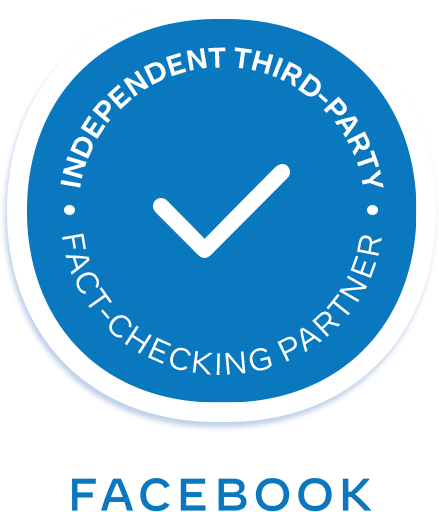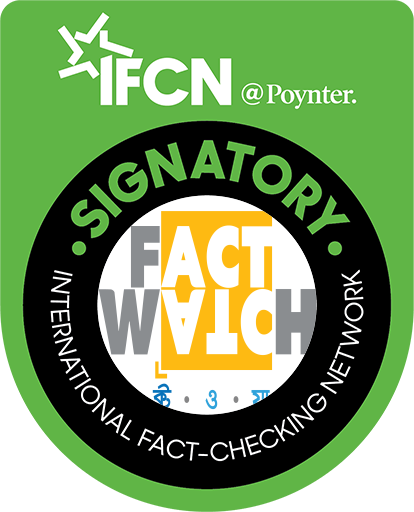ফ্যাক্টওয়াচের তথ্যযাচাই পদ্ধতি
ফ্যাক্টওয়াচ ইউনিভার্সিটি অফ লিবারেল আর্টস বাংলাদেশ (ইউল্যাব)-এর ক্যাম্পাস কমিউনিটির অংশ। আমরা ইউল্যাবের মিডিয়া স্টাডিজ এবং জার্নালিজম বিভাগের স্নাতক পর্যায়ের শিক্ষার্থীদের মধ্যে থেকে ফ্যাক্ট চেকার এবং ইন্টার্ন নিয়োগ করি যারা সামাজিক যোগাযোগ মাধ্যমসহ অন্যান্য মাধ্যমে প্রচারিত বিভিন্ন খবরের দিকে নজর রাখে, বিশেষ করে জনসাধারণের মধ্যে সাম্প্রতিক আলোচ্য ঘটনার দিকে।
আমাদের শিক্ষার্থী ফ্যাক্ট চেকার ও ইন্টার্ন বা শিক্ষানবিসরা ফ্যাক্ট চেকিং এর জন্য বিভিন্ন বিষয়বস্তু নির্বাচন করে, যা সহকারী সম্পাদক এবং প্রতিষ্ঠাতা সম্পাদকের মাধ্যমে চূড়ান্ত হয়।
এসব বিভিন্ন মধ্যমে অসংখ্য দাবি উত্থাপিত হয়, যার সত্যতা সংশ্লিষ্ট তথ্য বিশ্লেষণের মধ্যমে যাচাই করা হয়। তথ্য যাচাই বা ফ্যাক্ট চেকিং এর বিষয়বস্তু নির্বাচনের ক্ষেত্রে যেসব প্রশ্ন বিবেচনা করা হয়:
- দাবির বিষয়বস্তুটি কি উল্লেখযোগ্য বা জনগুরুত্বপূর্ণ?
- এটি কি কোনো গোষ্ঠী বা উল্লেখযোগ্যসংখ্যক মানুষকে প্রভাবিত করতে পারে?
- জনসাধারণের জন্যে এই বিষয়ে সিদ্ধান্ত নেওয়া কী কঠিন? সংশ্লিষ্ট তথ্য কী অস্পষ্ট বা দুর্বোধ্য? এসব তথ্য কী সহজলভ্য?
- সংবাদটি কি এরকম উস্কানিমূলক বা সংবেদনশীল, যে এর সত্যতা যাচাই করা না থাকলে এটি কোনো ব্যক্তি, প্রতিষ্ঠান বা গোষ্ঠীর জন্য ক্ষতিকর হতে পারে?
আমাদের কাজের আওতায় যা যা পড়ে না
- নগন্য ভুল যেমন মুদ্রণপ্রমাদ, বানান ভুল বা বলায় সামান্য ভুল
- স্পষ্টতই ব্যঙ্গাত্মক বা হাস্যকর বিষয়বস্তু, যেমন রসিকতা/কৌতুক, মিম বা অত্যুক্তি
- ভবিষ্যদ্বাণী এবং মতামত যা স্বভাবতই যাচাইযোগ্য নয়
- যেসব দাবি পর্যালোচনার প্রমাণ বা তথ্যাদি সাধারণের জন্য উন্মুক্ত নয়। তবে, সর্বসাধারণের বিষয়টি নিয়ে প্রবলআগ্রহ থাকলে আমরা আমাদের পাঠকদের জন্য সে বিষয়ে যা যা তথ্যপ্রমাণ পাওয়া গেছে তা উপস্থাপন করে থাকি।
- ধর্ম সম্বন্ধীয় দাবি যা যাচাই করার জন্য সে বিষয়ে বিশেষায়িত জ্ঞান প্রয়োজন
- ষড়যন্ত্রতত্ত্ব, কিংবদন্তি বা অলৌকিক ঘটনা – এসব জনপ্রিয় বা ভাইরাল হলেও সেগুলোর তথ্য বা দাবি যাচাইযোগ্য নয়
- বাংলাদেশের রাজনীতিবিদদের রাষ্ট্রীয় নীতি বিষয়ক বা জনগুরুত্বপূর্ণ সিদ্ধান্ত বা বক্তব্য ব্যতিরেকে কোন রাজনৈতিক বক্তব্য যাচাইয়ের আওতায় রাখা হয় না
প্রতিবেদন লেখা ও সম্পাদনার কার্যধারা
- ফ্যাক্ট-চেকিং দল, অর্থাৎ ফ্যাক্ট-চেকার ও ইন্টার্নরা প্রধান গবেষকের দিকনির্দেশনায় আমাদের ফ্যাক্ট-চেকিং প্রক্রিয়াটি অনুসরণ করে, যার বিস্তারিত নিচে দেওয়া আছে। গবেষণাটি দলগতভাবে হলেও একজন ফ্যাক্ট-চেকারকে প্রতিবেদন লেখার জন্য মনোনীত করা হয়।
- খসড়া প্রতিবেদনটি তৈরী হলে সহকারী সম্পাদক অনুলিপি সম্পাদনাগুলি সম্পাদন করেন এবং নির্ভুলতা, প্রাসঙ্গিকতা এবং ভারসাম্যের জন্য উত্সগুলি পরীক্ষা করেন। প্রয়োজনে লেখক কোনও গুরুত্বপূর্ণ তথ্য বাদ দিয়েছেন বলে মনে হলে সহকারী সম্পাদক আরেকবার স্বতন্ত্র গবেষণা গবেষণা পরিচালনা করেন।
- ফ্যাক্ট-ফাইল এবং যেসব প্রতিবেদনে গবেষনাধর্মী নিবন্ধ বা বিশেষজ্ঞের পরামর্শের প্রয়োজন হয়, প্রধান গবেষক সেই ফ্যাক্ট চেকিং প্রক্রিয়াগুলি নিবিড়ভাবে দেখেন। অন্যদিকে তথ্য-প্রযুক্তি বিষয়ক যেকোন বিষয়বস্তু এবং ফ্যাক্ট চেকিং-এ কোন প্রযুক্তিগত প্রশ্ন থাকলে আমাদের প্রযুক্তি উপদেষ্টা সেখানে অংশগ্রহণ করেন।
- প্রাথমিক সম্পাদনা শেষে প্রয়োজনে লেখককে রিপোর্টটি সংশোধন করতে বলা হয়। সম্পাদিত প্রতিবেদনটি প্রস্তুত হয়ে গেলে, সহকারী সম্পাদক ওয়েবসাইট এবং ফেসবুকের পৃষ্ঠায় প্রকাশের আগে প্রতিষ্ঠাতা সম্পাদকের কাছ থেকে একটি চূড়ান্ত অনুমোদন নেন।
- সাধারণত আমাদের আমাদের ফ্যাক্ট-চেকিং পদ্ধতি স্বয়ংক্রিয়ভাবে একটি নির্দিষ্ট রেটিংয়ের দিকে নিয়ে যায়। তবে, যখন সহকারী সম্পাদক লেখকের প্রস্তাবিত রেটিংয়ের সাথে একমত হতে পারেন না, তখন প্রতিষ্ঠাতা সম্পাদক, প্রধান গবেষক এবং সহকারী সম্পাদকের মধ্যে আলোচনার ভিত্তিতে চূড়ান্ত সিদ্ধান্ত নেওয়া হয়।
তথ্যযাচাইয়ের ধাপসমূহ
ফ্যাক্টওয়াচে প্রকাশ করার আগে তথ্য যাচাইয়ের জন্য আমরা নিম্নলিখিত নিয়মগুলো অনুসরণ করে থাকি:
১। যে সংবাদটির সত্যতা যাচাই করা হবে, তার উৎস কি? কেন এই তথ্যের যাচাই করা দরকার? উৎস শনাক্ত করার ক্ষেত্রে আমরা তথ্যের স্ক্রিনশট এবং সংশ্লিষ্ট লিংকগুলো প্রতিবেদনে যুক্ত করে থাকি।
২। প্রয়োজনীয় গবেষণা সম্পন্ন করা সাপেক্ষে আমরা ঐ সংবাদটির সত্য/মিথ্যা সংক্রান্ত সিদ্ধান্ত গ্রহণ করি। প্রতিবেদনের এই ধাপে আমরা আমাদের মূল্যায়ন যুক্ত করি। তারপর ধাপে ধাপে আমাদের দাবির সপক্ষে প্রমাণ দাখিল করি।
৩। আমাদের উপাত্ত সংগ্রহের প্রাথমিক মাধ্যম হচ্ছে গণমাধ্যম ও সামাজিক মাধ্যম। কিন্তু প্রয়োজনে আমরা সংবাদটির প্রাথমিক উৎসের (যথা, কোনো ব্যক্তি, এজেন্সি, গোষ্ঠী বা সাংবাদিক) সাথে আলাপচারিতা কিংবা যোগাযোগের মাধ্যমেও এর সত্যতা যাচাই করে থাকি।
৪। তথ্য যাচাইয়ের উৎস নির্বাচনে আমরা প্রতিষ্ঠিত গণমাধ্যম, সংবাদ এজেন্সি কিংবা দায়িত্বপ্রাপ্ত অথরিটিকেই প্রামাণ্য বিবেচনা করি। সেরকম প্রামাণ্য সূত্র না পাওয়া পর্যন্ত আমরা সিদ্ধান্ত গ্রহণ করি না। ইমেজ বা ভিডিও যাচাইয়ের ক্ষেত্রে আমরা প্রতিষ্ঠিত ছবিযাচাই প্লাটফর্ম তথা গুগল ইমেজ, টিন আই রিভার্স ইমেজ সার্চ ইত্যাদির সাহায্য নিই।
৫। ফ্যাক্ট ফাইল বা প্রয়োজনীয় তথ্য সন্নিবেশ করে কোনো প্রতিবেদন রচনার ক্ষেত্রে আমরা একাডেমিক এবং স্বীকৃত জর্নালে প্রকাশিত গবেষণা নিবন্ধগুলো থেকে সূত্র নিয়ে থাকি।
৬। প্রতিবেদন প্রকাশের ক্ষেত্রে ফ্যাক্টওয়াচ সর্বোচ্চ স্বচ্ছতা নিশ্চিত করে। আমরা আমাদের প্রতিটি প্রতিবেদনে পূর্ণাঙ্গ সূত্রনির্দেশনা দিয়ে রাখি। প্রতিবেদনের ধাপে ধাপে এই সূত্র সন্নিবেশ করা হয়, যাতে পাঠকের পক্ষে আমাদের তথ্যযাচাই এর প্রক্রিয়াটুকু পরিষ্কার হয়। প্রতিবেদনের শেষেও আমরা সবগুলো সূত্রকে নির্ঘণ্ট আকারে প্রদান করে থাকি। যদি এমন মনে হয় যে, সূত্রটি সাধারণের পক্ষে অপ্রবেশ্য কিংবা কোনো কারণে পরবর্তীতে খুঁজে পাওয়া নাও যেতে পারে – সেক্ষেত্রে সেই সূত্রের স্ক্রিণশট আমরা প্রতিবেদনে যুক্ত করি সূত্র প্রদানের অতিরিক্ত দায়িত্ব হিসেবে।
৭। তথ্যযাচাইয়ের রেটিং এর ক্ষেত্রে প্রতিবেদক প্রাথমিক রেটিং প্রস্তাব করেন। তারপর প্রতিবেদনটি নিয়ে সম্পাদক ও গবেষকদের মধ্যে আলোচনাসাপেক্ষে রেটিংটির যাথার্থ্য নিরূপণ করা হয়। অধিকাংশ ক্ষেত্রেই যাচাই পদ্ধতি স্বয়ংক্রিয়ভাবে রেটিং নির্ধারণ করে দেয়। অল্প কিছু ক্ষেত্রে যাচাই পদ্ধতি অনুসরণ করার পরেও রেটিং নিয়ে সম্পাদনা পর্ষদে দ্বিমত থেকে যেতে পারে। সেক্ষেত্রে ফ্যাক্টচেকারদের মধ্যে ভোটের মাধ্যমে রেটিং নির্ধারণের ব্যবস্থা রাখা হয়েছে।
৮। প্রতিটি প্রতিবেদনের ক্ষেত্রে আমরা তার রেটিংটি দুই জায়গায় প্রদান করি: প্রথমত, প্রধান ছবি বা ফিচারড ইমেজের ওপরে; দ্বিতীয়ত: প্রতিবেদনের শুরুতে।
ক্যাটাগরিসমূহ
ফ্যাক্টওয়াচ মূলত তিনটি জেনেরিক ক্যাটাগরিতে তার প্রতিবেদনগুলো সন্নিবেশ করে।
১. ইন্টারনেট গুজব: যেখানে সামাজিক মাধ্যম কিংবা গণমাধ্যমে ভাইরাল হয়ে যাওয়া যাবতীয় গুজব, ভূয়া ছবি, ভূয়া ভিডিও ইত্যাদি বিষয়ে ফ্যাক্টওয়াচের যাচাই প্রতিবেদন সন্নিবেশিত হয়।
২. ফ্যাক্টফাইল: গুজব নয়, আবার ঠিক ভাইরালও নয়, কিন্তু গণমাধ্যমে বা সামাজিক মাধ্যমে মনগড়া তথ্যের নানারকম পরিবেশনার কারণে আমরা অনেক বিভ্রান্তির মুখোমুখি হই। এই পরিসরে এ ধরনের বিষয়গুলোকে নিয়ে গবেষণাধর্মী এবং বিশ্লেষণাত্মক নিবন্ধ সন্নিবেশিত হয়।
ফ্যাক্টফাইলে তিনটি সাবক্যাটাগরি আছে: তথ্য যাচাই, বিজ্ঞাপন যাচাই এবং লেখাজোখা। পণ্যের বিজ্ঞাপন যেহেতু ভোক্তা হিসেবে আমাদের তথ্য পাওয়ার একটি গুরুত্বপূর্ণ উৎস, সেজন্য একে একটি সাব ক্যাটাগরি হিসেবে ফ্যাক্টওয়াচ বিবেচনা করে। রাজনৈতিক প্রচারণাগুলোকেও এই ক্যাটাগরির অধীনে যাচাই করা হয়।
৩. ফ্যাক্টওয়াচ ভিডিও: এতে বিভিন্ন গুরুত্বপূর্ণ ফ্যাক্টফাইল ইস্যু তথা জনগুরুত্বপূর্ণ বিষয়গুলোকে সহজবোধ্য ভিডিও প্রতিবেদন আকারে পরিবেশন করা হয়।
৪. করোনাভাইরাস: এটি মূলত বিশেষ একটি ক্যাটাগরি, ফ্যাক্টওয়াচের জেনেরিক ক্যাটাগরি নয়। করোনামহামারি আমলে তৈরি হতে থাকা প্রচুর গুজব, মনগড়া তথ্য এবং বিভ্রান্তিকর বিষয়গুলোকে এক সারিতে রাখার জন্য এই ক্যাটাগরিটুকু করা হয়েছে। এই ক্যাটাগরির অধীনে তিনটি সাবক্যাটাগরি আছে, যথা: করোনা তথ্য যাচাই, জরুরি পরামর্শ ও জনউদ্যোগ। প্রথমটি সরাসরি ফ্যাক্টচেকিং সম্পর্কিত হলেও। পরের ক্যাটাগরিগুলোতে সন্নিবেশিত তথ্য নানাভাবে জনসাধারণকে বিভ্রান্তির হাত থেকে রক্ষা করে এবং দিকনির্দেশনা দেয়। ফলে, ফ্যাক্টওয়াচ এসব তথ্যের সন্নিবেশ করাকে এই দুর্যোগময় সময়ে জরুরি দায়িত্ব মনে করে।
ফেসবুকের থার্ড-পার্টি ফ্যাক্টচেকিং প্রোগ্রাম
২০২০ সাল থেকে ফ্যাক্টওয়াচ ফেসবুকের থার্ড-পার্টি ফ্যাক্টচেকার হিসেবে কাজ করে আসছে। ফেসবুকের স্বত্বাধিকারী মেটা-র সাথে চুক্তি অনুযায়ী ফ্যাক্টওয়াচ ফেসবুকে ভাইরাল হওয়া অপতথ্য ও গুজব বন্ধে ফেসবুককে সহায়তা করছে। এই কাজটি ফ্যাক্টওয়াচ স্বাধীন ফ্যাক্টচেকার হিসেবেই করে থাকে, এবং ফ্যাক্টওয়াচের মতামতে ফেসবুক কোনোরকম প্রভাব বিস্তার করে না। স্বাধীন ফ্যাক্টচেকার হিসেবে ফ্যাক্টওয়াচ নিম্নোক্ত পদ্ধতি অনুসরণ করে:
১. শনাক্ত করা: ফ্যাক্টওয়াচ মূলত নিজ উদ্যোগেই সামাজিক মাধ্যমে গুজব শনাক্ত করে থাকে। অবশ্য কৃত্রিম বুদ্ধিমত্তার সাহায্য নিয়ে ফেসবুকও সম্ভাব্য গুজবের একটা রিসোর্স ফ্যাক্টওয়াচকে ব্যবহার করতে দিয়ে থাকে।
২. বিশ্লেষণ করা: শনাক্ত করা গুজবটিকে বিশ্লেষণ করে গুজব আকারে প্রমাণ করাই পরবর্তী কাজ। এক্ষেত্রে ফ্যাক্টওয়াচ তার উপরোল্লেখিত কর্মপদ্ধতি ব্যবহার করে। টেক্সট, ছবি বা ভিডিওর জন্য ভিন্ন ভিন্ন পদ্ধতির আশ্রয় নিয়ে তথ্যযাচাই প্রক্রিয়া সম্পন্ন করে।
৩. পদক্ষেপ নেয়া: ফ্যাক্টওয়াচ যখন কোনো একটা পোস্টকে “মিথ্যা” হিসেবে শনাক্ত ও ব্যাখ্যা করে, তখন ফেসবুক ঐ পোস্টের সার্কুলেশন একেবারে কমিয়ে দেয়। তদুপরি, সেই পোস্ট এবং একই ধরনের অন্যান্য পোস্টের গায়ে একটা সতর্কীকরণ লেবেল দিয়ে দেয়া হয়। ফলে এই কনটেন্টটি মানুষকে বিভ্রান্ত করতে পারে না। ফ্যাক্টওয়াচের পক্ষে ফেসবুকে পোস্ট করা কোনো কনটেন্ট মুছে দেয়া সম্ভব নয়।
এই তিনটি ধাপে ফ্যাক্টওয়াচ ফেসবুকের চুক্তি অনুযায়ী থার্ড-পার্টি ফ্যাক্টচেকার হিসেবে কাজ করে। ফেসবুকের থার্ড-পার্ট ফ্যাক্টচেকার সম্পর্কে জানতে ভিজিট করুন: How Facebook’s third-party fact-checking program works
ফেসবুকের থার্ড পার্টি ফ্যাক্টচেকার হিসেবে ফ্যাক্টওয়াচ প্রতিমাসে একটা নির্দিষ্ট পরিমাণ ব্যাখ্যামূলক নিবন্ধ প্রকাশ করে থাকে। এর বাইরে ফ্যাক্টওয়াচ তার নিয়মিত কার্যক্রমের অংশ হিসেবে ফ্যাক্টফাইল, সাক্ষাৎকার, ভিডিও প্রতিবেদন ইত্যাদি প্রকাশ করে আসছে। এসব প্রকাশনা ফেসবুকের চুক্তির অধীন নয়, বরং ফ্যাক্টওয়াচের সামাজিক কমিটমেন্টের অংশ। স্বাধীন থার্ড-পার্টি ফ্যাক্টচেকার হিসেবে ফ্যাক্টওয়াচের কার্যক্রম কিংবা সিদ্ধান্ত গ্রহণ প্রক্রিয়ার উপর ফেসবুকের কোনো নিয়ন্ত্রণ নেই।
ফেসবুকের থার্ড-পার্টি ফ্যাক্টচেকার হিসেবে কাজ শুরু করার আগে ফ্যাক্টওয়াচ খানিকটা ভিন্ন একটা রেটিং পদ্ধতি অনুসরণ করত। পরবর্তীতে ফেসবুকের রেটিং পদ্ধতি যৌক্তিকভাবে আরো গ্রহণযোগ্য প্রতীয়মান হওয়ায় ফ্যাক্টওয়াচ তার রেটিং পদ্ধতি হালনাগাদ করেছে।
ফ্যাক্টওয়াচ রেটিং
আমরা সাত ধরনের রেটিং ব্যবহার করে থাকি:
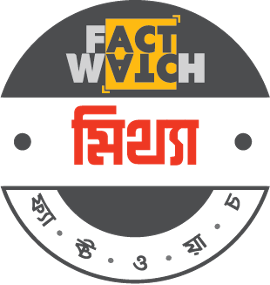 |
মিথ্যাযেসব তথ্য বা খবরের কোন ভিত্তি নেই, ফ্যাক্টওয়াচ এদের “মিথ্যা” হিসেবে আখ্যায়িত করে। অযৌক্তিক কথাবার্তা, ভূয়া উদ্ধৃতি, ষড়যন্ত্র তত্ত্ব, বাস্তবে সম্ভব নয় এমন উদ্ভট দাবি, অথবা কোনো বাস্তব ঘটনা বা বক্তব্যের ভুল ব্যাখ্যা ইত্যাদি যাবতীয় কনটেন্ট ফ্যাক্টওয়াচের বিবেচনায় মিথ্যা। কোনো একটি ছবি, অডিও বা ভিডিওকে যখন তার সাথে সম্পর্ক নেই এমন অন্য একটি ঘটনার প্রমাণ হিসেবে হাজির করা হয়, সেসব দাবিকেও ফ্যাক্টওয়াচ “মিথ্যা” হিসেবে সনাক্ত করে। |
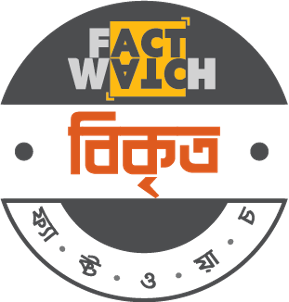 |
বিকৃত
|
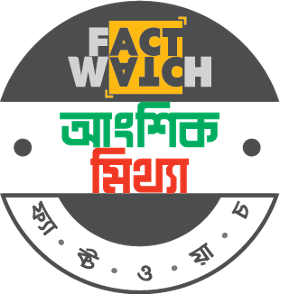 |
আংশিক মিথ্যা
|
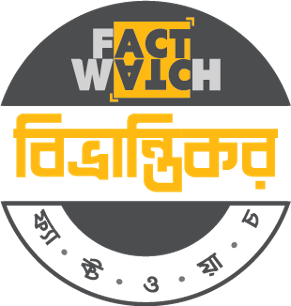 |
বিভ্রান্তিকর
|
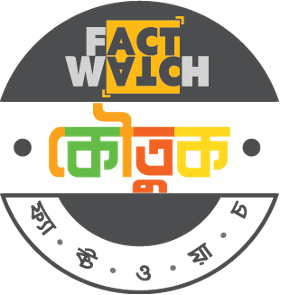 |
কৌতুক
|
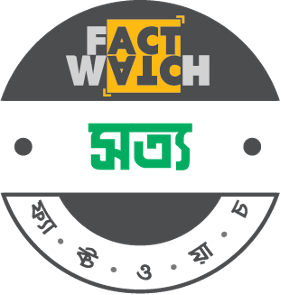 |
সত্য
|
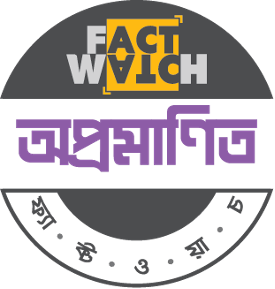 |
অপ্রমাণিত
|
Fact-Checking Methodology
Selecting a claim to fact-check
We are a part of the University of Liberal Arts Bangladesh campus community. We recruit and train fact-checkers and interns among undergraduate students from the Media Studies and Journalism program.
Our Fact-checking team comprised of Fact-Checkers and interns actively monitor news and social media while keeping an eye on popular discourse for potential claims that could be fact checked. They share fact-check ideas with the Assistant Editor and Founding Editor, who approve the final selection through a team discussion.
The claim is selected based on a number of factors, for example:
- Is it important in terms of public interest?
- Could it impact a large number of people?
- Is it difficult for people to assess the claim? Are the facts around it unclear or ambiguous? Are the facts easy to find?
- Is the content provocative, or sensitive, and could it potentially cause harm if left unchecked
What We Do Not Cover
- Inconsequential glitches, such as a misspelling or slip of the tongue
- Content that is clearly sarcastic or humorous, such as jokes, memes or hyperbole
- Predictions and opinions that are not fact-checkable by their very nature
- Claims that involve evidence that cannot be accessed publicly. However, if there is significant public interest in the topic we may run a full fact-check process to present our readers with available evidence but rate the fact as “Could not be verified”
- Religious claims that require religious expertise to verify
- Conspiracy theories, rumors, urban legends or paranormal incidents that may go viral but cannot be subjected to the fact-checking process
- We do not cover political statements by Bangladeshi politicians unless they involve policy-level decisions and/or information with practical public impact
Fact-Checking Process and Editorial Chain
The fact-checking team (fact-checkers and interns) goes through the fact-checking process detailed below with the guidance of the Lead Researcher. While the research is a team effort, one fact-checker is designated to write the fact-checking report.
Once the draft report is written, the Assistant Editor performs copy edits and checks the sources for accuracy, relevance, and balance. If needed, the Assistant Editor conducts an independent round of research to ensure the writer did not miss any important data points or context.
For Fact-Files and reports that involve review of primary academic literature or expert consultation, the Lead Researcher closely oversees the fact-checking. For cases involving information technology or when technological advise is required for the fact-chck, our Technology Advisor works closely with the fact-checking team.
If necessary, the writer is asked to amend the report. Once the edited report is ready, the Assistant Editor takes a final approval from the Founding Editor before publishing it on the website and Facebook page.
Most often than not, our fact-checking procedure automatically points towards one particular rating. However, in cases where there the Assistant Editor does not agree with the rating proposed by the writer, the issue is discussed aamong the Founding Editor, Lead Researcher, and Assistant Editor for the final decision.
Fact-Checking Process and Report Writing: Step by Step
We go through the following steps to prepare our fact-checking report to file and publish:
-
- What have we found and where? What is the claim we need to fact-check? We check screenshots and archived links to locate the claim.
- Why is this claim being made? What is the context? If it is factual information, we gather evidence for the claim using primary sources. If it is a rumor or fake news, we observe if people are spreading it and reacting to it. Other instances of similar claims in different formats are also noted.
- Why could this claim be challenged? We gather evidence against the claim from primary and secondary sources, conflicting information and/or reports. We also assess reliability of the source(s).
- For both sides of the story, we look for primary sources — like information collected from contacting people directly, found on webpages and social media accounts, traceable expert opinions, scholarly literature (books and journal articles) — and secondary sources like reports from trustworthy media. For images and videos, we utilize trustworthy image assessment platforms like Google images, Tineye reverse image search etc.
- For our fact files, we depend on primary resources, focusing on articles published in peer-reviewed academic journals.
- We are absolutely transparent about our reporting of fact-checks. We provide our complete list of sources in every report. We add notes on where we found evidence at every step as hyperlinked citations, so that our fact checking procedure and what tools we used is clear to readers. We also list the sources in a footnote. If the evidence is not easily accessible or stable, we save a screenshot for our own records and include them in our reports.
- Once the fact checking is complete, the fact-checker involved proposes an initial rating. The editors and researcher then debate the suitable rating for the claim. Most often than not, our procedure automatically points us towards one particular rating. However, in cases where there is still any disagreement among the team, we take a vote.
- We place our rating on the featured image of the report as well as at the beginning of the report along with a summary.
Categories
We have three generic categories and one titled Coronavirus, specifically created to address the pandemic situation.
-
- Internet rumors: Rumors, edited or morphed images and videos, unsubstantiated claims that are widely shared and/or viral on social media
- Fact File: These are not rumors or viral claims, but information that can be presented in misleading terms on mainstream and social media. In our Fact Files, we bring our readers credible research findings and analyses on such claims. These are further classified under, fact checks, ad checks, and other resources.
- FactWatch Video: Based on our fact-checking reports, we present easy to understand videos on issues of public interest.
- Coronavirus: This is a special category created to combat the rumors, false information, and misleading claims generated by the Coronavirus pandemic. This is further divided into three categories: Fact checks, Essential Information, and Community Initiatives. Although the latter two are not fact checks per se, they have a proactive role in keeping people safe . Therefore, we created these categories as our response to this global crisis.
Facebook’s Third-Party Fact-Checking Program
Since 2020, Factwatch has been working as a Third-Party Fact-checker (TPFC) for Facebook. According to the agreement with Meta — the owner of Facebook — FactWatch is helping Facebook in stopping rumors and disinformation that have gone viral on Facebook. This work is done by FactWatch as an independent fact-checking organization, and Facebook exerts no influence on FactWatch’s opinion. As an independent fact-checker, FactWatch follows the following procedure:
- Identification: FactWatch basically detects rumors on social media on its own initiative. Also, with the help of artificial intelligence, Facebook provides resources of possible rumours which can be used by FactWatch.
- Analysis: The next task is to analyze the identified rumor and conclusively prove that it is indeed a rumor. To this end, FactWatch uses its afore-mentioned methodology. The fact-checking process is completed using different verification methods for text, image and/or video.
- Action: When FactWatch identifies and interprets a post as a “False”, Facebook drastically reduces that post’s circulation. In addition, the identified post and other similar posts are tagged with a warning label. As a result, this content does not confuse people. It is also not possible for FactWatch to delete any content posted on Facebook.
Through these three steps, FactWatch acts as a third-party factchecking organization under Facebook’s agreement. To learn more about Facebook’s Third-party Fact-checking program, visit: How Facebook’s third-party fact-checking program works.
As a Third-Party Fact -Checker for Facebook, FactWatch publishes a certain number of explanatory articles every month. Apart from this, FactWatch has been publishing fact-file reports, interviews, video reports etc. as part of its regular activities. These publications are not part of Facebook’s agreement, but part of Factwatch’s greater range of works. Facebook has no control over FactWatch’s activities or decision-making process.
Before FactWatch started working as a Third-Party Fact-Checker for Facebook, FactWatch followed a slightly different rating system. Later, Factwatch updated its rating system as Facebook’s rating system appeared to be logically more acceptable and evident.
Ratings
We rate our fact-checks in seven different ways:
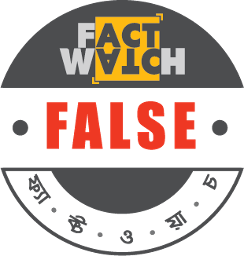 |
False
|
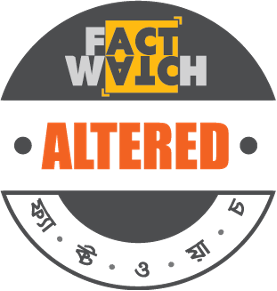 |
Altered
|
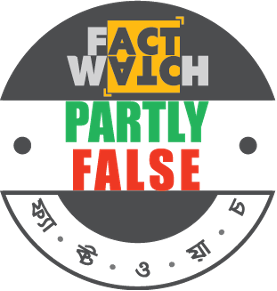 |
Partly False
|
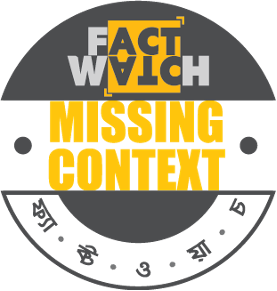 |
Missing Context
|
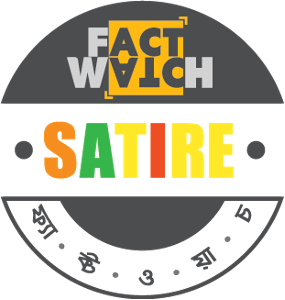 |
Satire
|
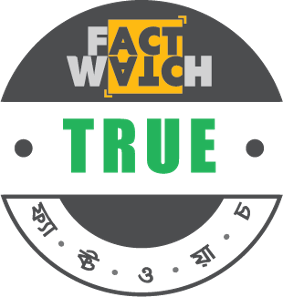 |
True
|
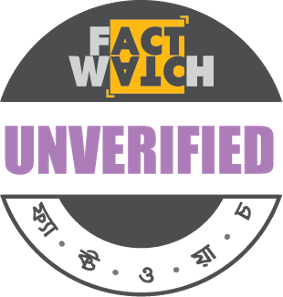 |
Unverified
|
